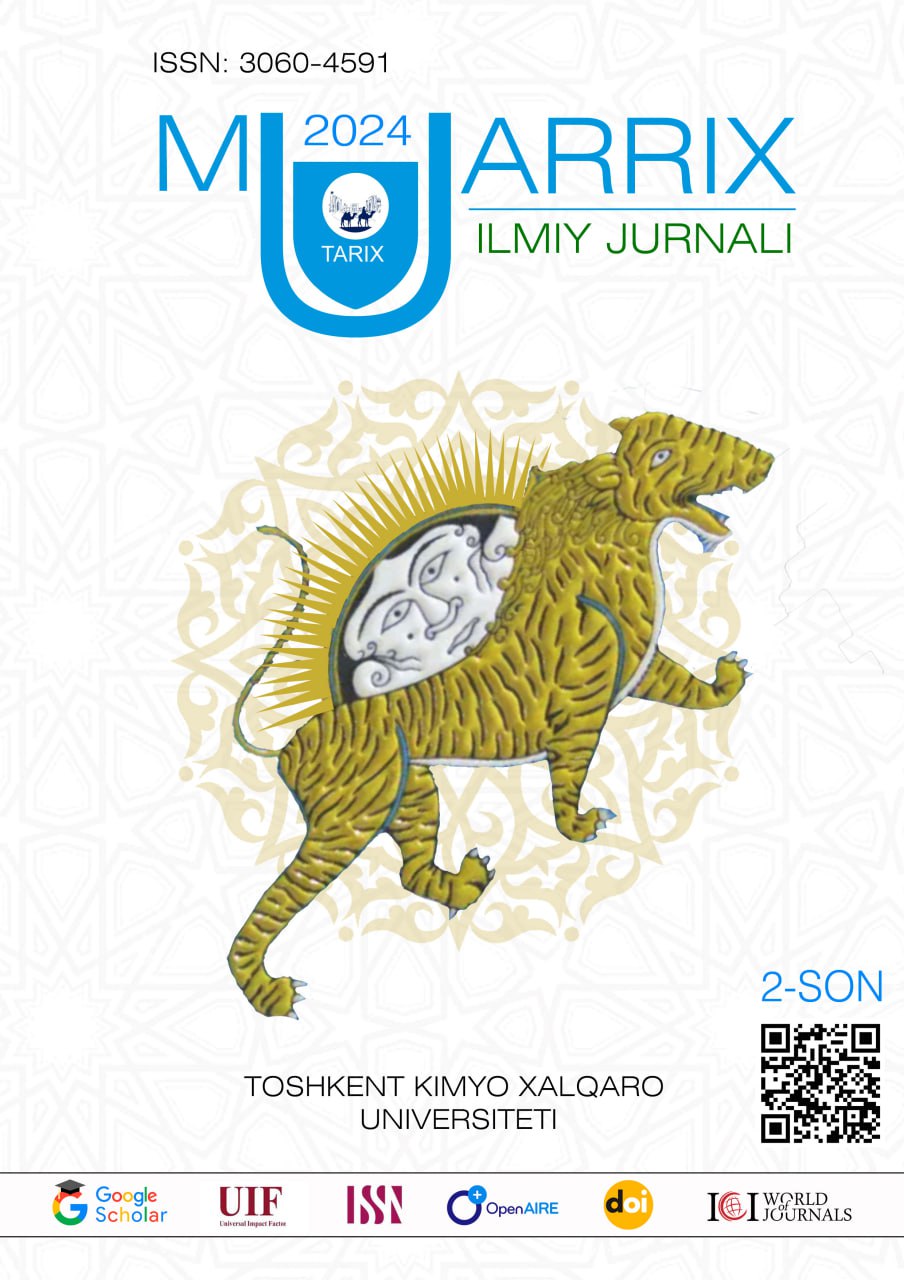THE ROLE OF “RAHAT AS-SUDUR” OF RAWANDI IN ENLIGHTENMENT OF EVENTS IN THE TERRITORY OF UZBEKISTAN RELATED TO THE SELJUQ PERIOD
DOI:
https://doi.org/10.5281/zenodo.14287870Abstract
. The work “Rahat al-sudur wa ayat al-surur” of Muhammad ibn Ali ibn Sulaiman Rawandi (died in 1207 or 1247) is one of the important sources for the study of the history of the Seljuks. The work contains interesting data on the history of Uzbekistan, that is, the historical-administrative parts as Mawerannakhr, Khorezm and their adjacent regions. The work dedicated to the Seljuk rulers, and in covering the biographies of the Seljuk sultans, information is given that the mother of Sultan Alp Arslan (1063-1072) belonged to the Qarakhanid dynasty (840-1212), that Sultan Malikshah (1072-1092) married the daughter of the Qarakhanid ruler Tamgach-han (1040-1068), and that Sultan Sanjar (1118-1157) also married a Qarakhanid princess and described the details of lives of those princesses. In addition, the source gave information about attacks and wars of Seljuk rulers as Alp Arslan, Malikshah and Sanjar with rulers of Samarkand, Bukhara, Khorezm, Shash and Ferghana. In addition, the relationship between Sultan Malikshah, Sultan Sanjar and representatives of the Qarakhanid and Anushteginid dynasties highlighted. Also, the relationship between the Khorezmshah Takish and the last Seljuk rulers is covered in the work.
In the work, also hadiths of Imam Muhammad ibn Ismail Bukhari (810-870) and Abu Isa Muhammad Termizi (824-892) are quoted, as well as excerpts from the poems of poets of Mawarannakhr who lived in the palace of the Seljuks, such as Asiruddin Ahsikati. References to “Zakhirai Kharazmshahi” of Ismail Jorjani (1040-1136) can also be seen. The composition contains data on that Sultan Sanjar wore a “zandani” dress made in the village of Zandana of Bukhara. From this, it can be seen that the Seljuks valued handicrafts made in Bukhara, Samarkand and other cities. The economic relations developed between cities of Turan and Iran in that epoch.
Despite the similarity of the enlightenment of many events in “Akhbar al-Dawla al- Saljuqiyyah” of Sadraddin Abul Hasan Ali Khusaini, this source has its own characteristics. Rawandi paid great attention to the historical role and identity of the Seljuk rulers.
In general, through the work, valuable information can be obtained about the political relations of the Seljuk dynasty with the Qarakhanid (840-1212) and Khorezmshah-Anushteginid (1097-1231) dynasties, as well as the cultural, socio-economic relations between the peoples of Turan and Iran. The work suggests that the Seljuks united Turkic, Iranian and other peoples in the distance from Shash (Tashkent, modern Uzbekistan) to Shushtar (Southern Iran). Through this idea put forward in this source, it can be concluded that the Turkic dynasties in different historical periods tried to make a great contribution to the development of human civilization by creating strong centralized states.
Written sources have a great importance in the study of any history, especially the works dedicated to the history of the certain dynasty and created in the ruling epoch of this dynasty. Nowadays some Uzbek young scientists believe that the sources are not so important in the study of history. They thing that any source is a reflection of past historical events in the mind of a person. For this reason, they say that the subjective perception is strongly manifested to interpret and describe events in the sources. Of course, the subjective aspects related to the authors, as an ideology of the state they served, personal views of the author, and stereotypes of the epoch in which they lived in, in many cases, play an important role in describing the events. However, the source gives us information about the past, so it is a great skill to consider the above factors when interpreting information in the source, that is, to know how to catch the level of the norm.





